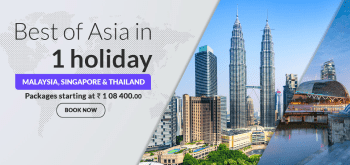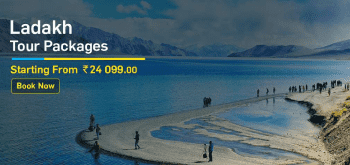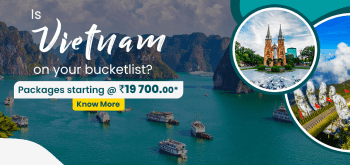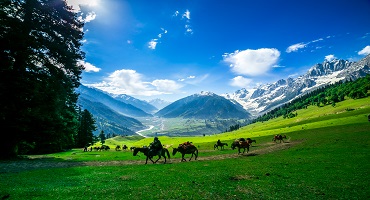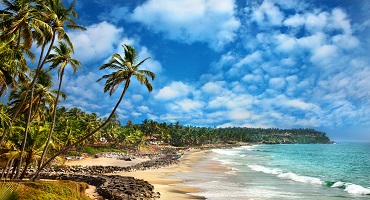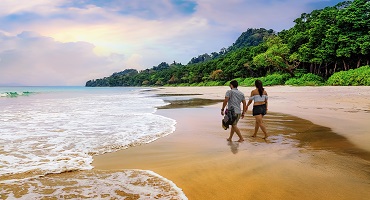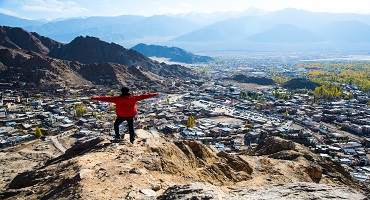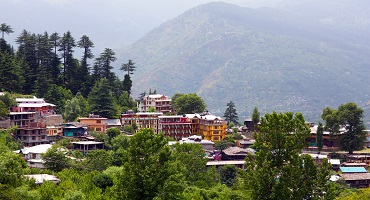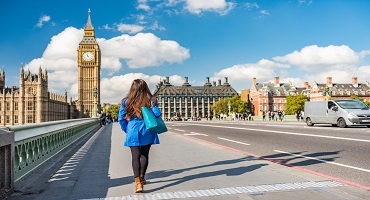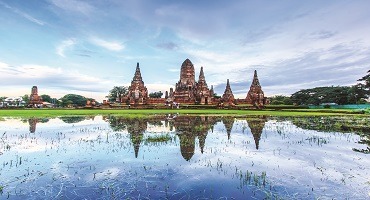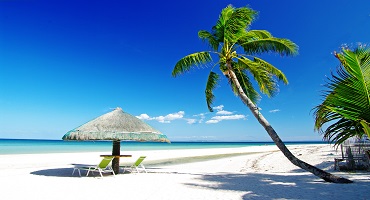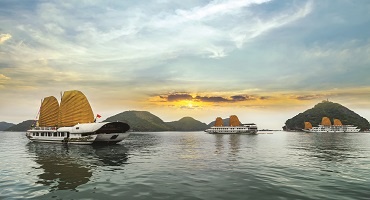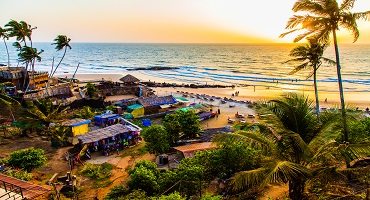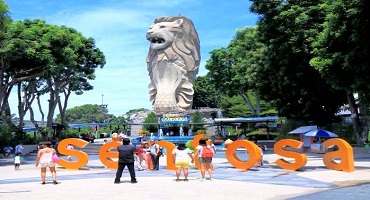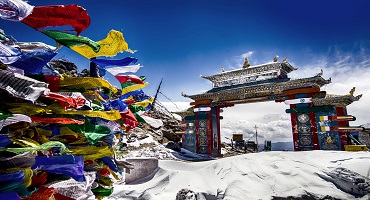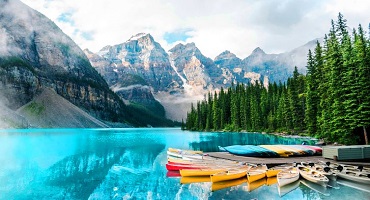The name is just 2 syllables. The width is a small 459 square kilometres. Each of the 115 islands of this nation are dwarfed by the massive continent of Africa that it neighbours. Currently, only 95,843 people live here – the smallest population of any sovereign African nation. Balance that against the titans of the earth – the biggest countries and cities – and it may seem rather small.
However, small things come in great packages. Today, we’re delivering this package right to your screen – the beautiful Seychelle island nation. This collection of tiny islands boasts of some of the most beautiful beaches on earth (a simple Google search will take your breath away), stunning green jungles, incredible wildlife and marine life, smooth and slick infrastructure, flavourful creole cuisine and the kind of luxury that fits right into your budget.
Ultimately, a chance to explore Seychelles tourism is the best gift to give yourself. So, today, let’s have fun unwrapping this delightful present together!
| Seychelles Tourism: A Quick Overview |
|
Continent
|
Africa
|
|
Capital
|
Victoria
|
|
Official Language
|
French, Seselwa
|
|
Dial Code
|
00-248-area code- landline
|
|
Population
|
95,843
|
|
Currency
|
Seychellois Rupee
|
|
Time Zone
|
(GMT+4)
|
|
Area
|
459 sq. km.
|
Highlights Of Seychelles
Islands
A honeymoon, destination wedding, retreat, beach vacation, family time – the Seychellean islands accommodate every wish of the traveller’s heart. While a vast majority of these islands remain uninhabited, you have the pleasure and luck of visiting the beautiful ones that are. We begin with Mahe, the economic and cultural hub of Seychelles. Spend day one indulging in water sports, and day two trekking the mountains here. Luxury resorts, restaurants and spas are yours for the enjoying at Mahe. Slow things down with a trip to the laid-back island of La Digue. Go on a beautiful boat ride at Nevis, kayak in the ocean, take the coco trail hike, sunbathe at Anse fourmis, visit the beautiful plantation house, trek through Veuve Nature reserve – La Digue lets you do your thing. Coming in third is the island of Praslin. Stroll along the picture-perfect Anse Lazio beach, have dinner at the stylish Café des Arts or enjoy the grilled seafood at Les Rochers, buy handicrafts and souvenirs at the exclusive Kreolor and meet the giant Aldabra tortoises at the Giant Tortoise Farm. Finally, there is the capital city of Victoria. Visit the National Museum of History, wander through the cheerful Sir Selwyn Selwyn-Clark Market, enjoy the artwork displayed at Kaz Zanana, soak in the serenity of the Cathedral of Immaculate Conception and walk through the Botanical Gardens. If your heart desires it, there’s something in Seychelles that will fulfil it.
Adventure Activities
Seychelles might exude serenity, but once you land, you’ll meet its wild, adrenaline-pumping side. You could spend your time relaxing on the beach, but if your pulse is pounding for more, then trust us there’s more than enough adrenaline to go around. Go zip-lining at the Constance Ephelia Hotel in Mahe, try parasailing in Beau Vallon (in Mahe), snorkel in the clear turquoise waters of La Digue, surf the curling waves off the coast of Mahe, Praslin, La Digue and other islands. Kayak across the glittering ripples of the Indian Ocean at Port Launay (Mahe), Au Cap (Praslin) Tamaka (Mahe) and from Round Island to Moyenne Island. Go sailing and explore the gorgeous grottos and coves that Seychelles has to offer. (Do note, that you can sail in the inner islands, as opposed to sailing to the outer islands as the latter can cause damage to the surrounding coral reefs). Finally, spend your holiday Scuba Diving in Seychelles numerous dive spots. These include L’ilot, St. Pierre, South Marianne Island, Beau Vallon, the Ennerdale Wreck and more. Other adventure sports to try out are the Banana Boat Ride, Windsurfing, Water Skiing, Jet Skiing, Glass Bottom Boats and more. The water welcomes every kind of adventurous impulse.
Shopping
There’s always a little bit of room in your suitcase saved for souvenirs. And why not? Seychelles boasts of some incredible tchotchkes for you to carry back home. One of the prettiest things would be the carved coconut shell artefacts. The most popular one is the Coco de Mer – the sea coconut. However, there are strict certifications in place if you’d like to carry this outside the country so make sure you have those in place before buying one of these. Additionally, you can buy coconut soap, perfumes and oil for friends and family. Valle de Mai in Praslin is the perfect place to buy all of the above. The second thing that should be on your shopping list, are those gorgeous Seychelle vanilla pods. The Union Estate Park and local shops in Mahe and Victoria all keep a stock of these delicious and aromatic pods and essence. Pick up some stunning art from local artists at Thoughts Stained Glass, Carrefour des Arts and Michael Adams Studio. Stock up your jewellery box with the rare black pearl – a Seychelles speciality. You can pick up an exquisite strand of these ebony pearls at Pearl Farm de Praslin. Finally, there are a bunch of smaller items like coral and beaded jewellery, spices, tea, lemongrass, ginger and more at the various markets in the country. Visit Sir Selwyn Clark Market, Victoria Market, Bazar Labrin and the Eden Plaza Shopping mall.
Cuisine
Inspired by French, Indian and Chinese flavours, the Creole Cuisine of Seychelles will tantalise and intrigue you. Sweet, tangy, spicy all intertwine magnificently, to cause a flavour burst in every bite. Enjoy succulent grilled red snapper, jackfish, sailfish and john fish, grab a packet of crispy breadfruit salted fried chips for an evening snack, sit down to a bowl of spicy Octopus curry or if you’re feeling especially adventurous, try the shark chutney which includes mashed shark meet mixed with Bilimbi, onion, lime and turmeric. For the health-conscious, a Satini salad will hit the spot with ingredients like raw papaya, golden apple, onion and spices. The non-vegetarian option is garnished with shark meat or fish. For your sweet tooth, Seychelles offers Ladob – a dish made of sweet potatoes or banana cooked in creamy coconut milk, flavoured with nutmeg, cinnamon and fresh vanilla.
Interesting Facts About Seychelles
- Seychelles is home to some of the rarest species of birds, like the bare-legged Scops owl (which was believed to be extinct but rediscovered here)
- The Coco de Mer, the sea coconut, produces the largest and heaviest seed in the world (around 15 kgs)
- The Seychelles capital – Victoria – is the smallest capital in the world
- On Bird Island, you’ll find the heaviest living tortoise in the wild, called Esmerelda who weighs 670 pounds
- The rare black parrot is the national bird of the country
- The outer islands of Seychelles host some of the largest seabird colonies in the world (mainly the Cosmoledo and Aldabra islands)
- Seychelles is a global frontrunner in forest conservation – 42% of the country’s territory is dedicated to the conservation
- Seychelles is a country of immigrants, with no indigenous population
Location Of Seychelles
Off the coast of East mainland Africa, lies the gorgeous island nation of Seychelles. It is surrounded by nearby country islands like Mayotte, Comoros, Madagascar, Reunion and Mauritius in the south and the Maldives and Chagos archipelago in the east.
Best time to visit Seychelles
Seychelles has 2 dominant seasons: dry and wet. The island nation is treated to beautiful weather – come rain or shine. However, there are 4 months in the year, when the weather and water conditions peak – these are April and May and October and November. These are generally transition months between the hot and humid seasons. You’ll be greeted with cool sea breeze, mild sunshine and a gentler ocean. These 4 months are the ideal time for scuba diving, bird watching, sunbathing and more.
How to Reach Seychelles
By Air: There are two airports in Seychelles: SEZ or Seychelles International Airport located in Victoria and the second one in Praslin, called Praslin Island Airport. The Seychelles International Airport is the main point of entry for international travellers and is the hub of the national carrier Air Seychelles. This airport sees flights from British Airways, Emirates, Austrian Airlines, Kenya Airways and Turkish Airlines. Nonstop flights from India to Seychelles are around 4 and a half hours.
Once you are in Seychelles, you can commute via road and sea:
By Road: Seychelles is blessed with a well-connected, paved road network of nearly 400 kilometres. Outside the main cities though, the quality of the roads may decline. From the hotel, you can rent a car to go sightseeing around, on Mahe Islands. Bike rentals are also available in the capital city of Victoria.
By Sea: Victoria houses the main seaport of Seychelles. Inter-Island Ferry and Cat Cocos offer regular catamaran ferries from Mahe to Praslin. You can catch a ferry every 15 minutes. The smaller islands do have a ferry system that connects them; however, it is less reliable.
History Of Seychelles
Throughout recorded history, the Seychelle islands have been largely uninhabited. Scholars assume that Austronesian seafarers were the first to visit this group of islands, followed swiftly by Maldivian and Arab traders. This is based on the discovery of tombs on the island, which were visible till 1910. Europeans were first spotted on 15th March 1503, as part of the fleet led by Vasco de Gama.
These islands were the transit point for the trade routes between Africa and Asia and the islands were often said to be used by pirates until the French took control in 1756. The islands were named Seychelles after Jean Moreau de Seychelles, King Louis XV’s Minister of Finance.
Independence was eventually won in 1976, as a republic of the Commonwealth of Nations.

